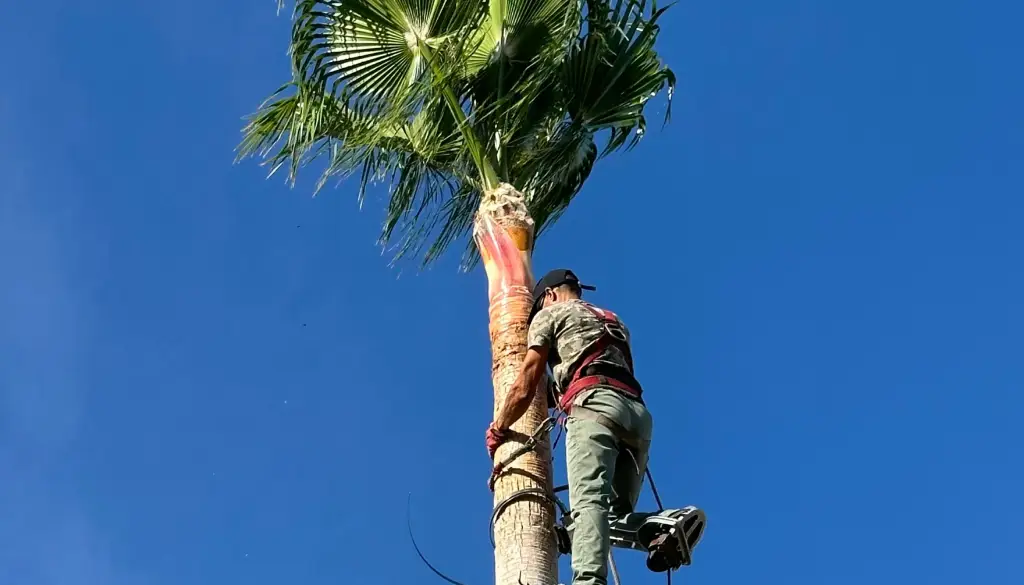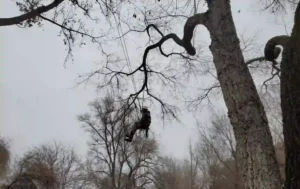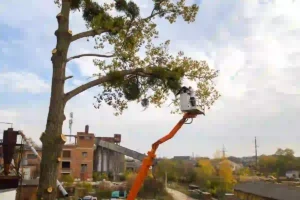Winter is when you’ll pay the least for tree trimming. December through February typically offers the lowest rates because demand drops and trees are dormant. But timing isn’t just about saving money – trim at the wrong time and you could damage your trees or waste your investment entirely.
Why Winter Trimming Costs Less
Tree service companies need work during slower months. Winter demand plummets because most homeowners don’t think about tree care when it’s cold. Contractors often slash prices by 20-40% to keep crews busy. You’ll also get better availability and faster scheduling.
The math is simple: A maple trim that costs $800 in spring might run $500 in January. That’s real money back in your pocket.
But here’s where it gets tricky. Not every tree should be trimmed in winter. Some species actually suffer damage from cold-weather cutting. Others need specific timing for health or fruit production.
Oak Trees: Winter Only (But Not All Winter)
Oak trees must be trimmed during their dormant period, roughly November through February in most climates. Trim them any other time and you’re asking for trouble. Oak wilt spreads through fresh cuts during growing season, and this fungal disease kills trees fast.
The beetles that carry oak wilt are active from April through October. One infected cut during this period can doom a healthy oak. Insurance won’t cover tree death from improper timing either.
Cost savings for winter oak trimming run 25-35% compared to emergency summer work. Plus winter oak trimming prevents the $1,500-$3,000 removal cost if oak wilt strikes.
Skip trimming oaks younger than three years except for broken limbs. Young oaks need their energy for root development.
Pine Trees: Late Winter Wins
Pine trees handle winter trimming well, but late winter works best – think February through early March. The sap flow is minimal, reducing the sticky mess and tree stress.
Never top a pine tree. Ever. This kills them by removing the terminal leader. Contractors who suggest topping don’t understand pine biology and will destroy your tree.
Pine trimming costs drop significantly in winter. Expect 30% savings compared to summer rates. Summer pine work costs more because accessing tall pines requires bucket trucks, and summer demand keeps equipment booked solid.
Watch for pine pitch bleeding after cuts. Healthy pines seal wounds naturally, but excessive bleeding in cold weather signals problems.
Maple Trees: The Exception
Maples break the winter rule. They actually thrive with mid to late summer trimming, typically July through August. Winter maple trimming causes heavy sap bleeding that weakens the tree.
This creates a cost problem. Summer maple trimming runs 40-50% higher than winter rates because demand peaks. But trimming maples in winter to save money costs more long-term through reduced tree health and potential die-back.
Sugar maples are especially sensitive. Winter cuts on sugar maples can bleed sap for weeks, creating perfect conditions for insects and disease.
Plan maple trimming for late summer and budget accordingly. The higher upfront cost prevents expensive problems later.
Fruit Trees: Dormant Season Precision
Fruit trees need dormant season trimming for maximum production. January through early March works best in most regions. The exact timing depends on your local climate and when buds start swelling.
Dormant pruning stimulates spring growth and increases fruit yield. Summer pruning reduces next year’s fruit production by removing energy-storing leaves.
Apple and pear trees cost 20-30% less to trim in winter. Stone fruits like cherry and plum need slightly different timing – prune them in late winter just before bud break to prevent disease.
Common mistake: trimming fruit trees too early in winter. Wait until the coldest weather passes but before buds begin growing. Trim too early and cold damage hits fresh cuts. Trim too late and you reduce fruit production.

Palm Trees: Year-Round but Strategic
Palm trees don’t follow normal deciduous patterns. They can be trimmed any time, but costs vary by season and regional demand.
Winter palm trimming costs less in northern markets where few palms exist. But in Florida and California, winter rates stay high because snowbird homeowners return and demand services.
The key palm rule: never remove green fronds. Only trim brown, dead fronds and seed stalks. Over-trimming palms weakens them permanently.
Hurricane season affects palm trimming costs dramatically in coastal areas. Rates spike 50-100% from June through November as homeowners rush to prepare for storms.
Regional Cost Variations
Location changes everything about seasonal pricing. Northern climates see bigger winter savings because growing seasons are shorter. Southern markets maintain more consistent year-round pricing.
Mountain regions offer huge winter savings – sometimes 50% off peak rates – because snow limits access and demand drops to nothing.
Coastal areas with mild winters see smaller savings. Trees don’t go fully dormant, homeowners stay active year-round, and contractors maintain steadier business.
Urban markets generally offer better winter deals than rural areas. Cities have more contractors competing for limited winter work.
Storm Season Reality
Emergency trimming after storms costs double or triple normal rates. Ice storms, hurricanes, and severe winds create massive demand spikes that last weeks.
Book routine trimming before storm season hits your area. Spring preparation costs far less than emergency cleanup.
Most insurance covers storm damage removal but not preventive trimming. Yet proper trimming reduces storm damage risk significantly.
What Happens When You Trim Wrong
Trimming at the wrong time doesn’t just waste money – it can kill trees. Late spring trimming on oaks invites oak wilt. Winter trimming on maples causes excessive bleeding. Summer trimming on fruit trees reduces production.
Recovery from poorly timed trimming takes years. Some trees never fully recover. A $400 trimming mistake can lead to $2,000 tree removal costs.
Scheduling Strategy
Book winter trimming in November for best rates and scheduling. Waiting until January means competing with other bargain hunters.
Get multiple quotes before committing. Winter pricing varies wildly between contractors. Some maintain year-round rates while others cut prices aggressively.
Confirm your contractor understands species-specific timing. Too many companies focus on convenience over tree health.
The Bottom Line
Winter trimming saves money, but only when done correctly for the right species. Oak and pine trees benefit from winter work with significant cost savings. Maples and some other species need different timing regardless of price.
Calculate the total cost including potential tree damage, not just the upfront trimming bill. Cheap trimming at the wrong time often costs more than properly timed work.
Budget 25-40% savings for winter trimming on appropriate species. Use those savings to trim more trees or invest in other property improvements.
The best time to trim isn’t just the cheapest time – it’s when your specific trees need it for optimal health. Smart timing combines cost savings with proper tree care.



